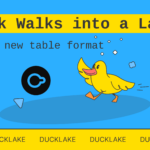Design patterns have been enhancing software design for years. In the cloud, they can also cut switching costs. It’s like magic!

Design patterns are essential for software design, offering developers a technology-agnostic framework to address common challenges and trade-offs. They can be implemented using standard language constructs or integrated into platforms. Despite fluctuations in interest over the years, recent trends like Microservices Patterns indicate a renewed focus on architectural best practices, especially with the advent of powerful cloud runtimes.
Patterns for Distributed Systems
Due to their technology-agnostic nature, numerous design patterns have stood the test of time, including those applied to serverless solutions discussed in recent blog posts. As serverless architectures become more prevalent, leveraging asynchronous messaging patterns becomes intuitive due to their ability to address distributed system challenges such as partial failure, latency, and message redelivery. Despite advancements in infrastructure automation, design patterns remain crucial for navigating complexities and trade-offs in system design. Moreover, they hold value in emerging contexts like multi-cloud environments and avoiding vendor lock-in.
More Cloud == More Lock-in?
The enthusiasm of developers and architects for the multitude of cloud services available is tempered by a perceived dilemma: while fully-managed services alleviate the burden of routine tasks like network setup and software patching, reliance on these services may lead to platform dependency, or “lock-in.” Balancing the convenience of managed services with the desire for architectural flexibility poses a significant challenge. Despite the appeal of leveraging powerful cloud offerings for modern application development, the importance of portability remains a valid concern.
Beware of Mental Lock-in
Mental lock-in manifests in two ways. Firstly, past experiences may unconsciously shape your thinking, hindering the adoption of modern or alternative architectures. Secondly, technology platforms can encourage a focus on platform-specific components rather than overarching solution concepts. While this approach can keep you grounded in reality, it risks losing the original intent of your design. This challenge intensifies with increasingly powerful platforms like cloud services, which may tempt architects to define solutions solely by the services utilized. It’s crucial for architects to move beyond listing ingredients and instead focus on holistic solution design to avoid falling into the trap of mental lock-in.

Abstraction Layers = –Lock-in?
In software engineering, adding layers of indirection is a common strategy to reduce dependencies, often referred to as the Fundamental theorem of software engineering. SQL serves as a prime example of this approach, facilitating database interchangeability. Abstraction layers aimed at mitigating cloud platform lock-in are similarly advocated, drawing parallels with SQL’s success. However, it’s crucial to recognize the differences between creating new abstractions and the organic development of SQL. While SQL streamlines database interactions, it wasn’t originally designed for portability. Care must be taken when implementing abstractions to ensure they enhance current productivity without sacrificing future migration flexibility.
Such abstraction layers look roughly like this:

For additional information, please refer to the link provided.
Link to the Article
https://architectelevator.com/cloud/serverless-design-patterns/






